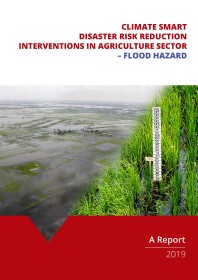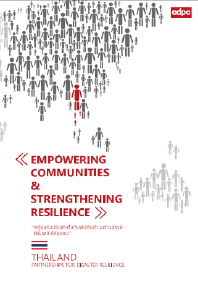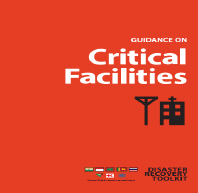- About Us
-
Who we are
-
- Publications
-
- ADPC Academy
-
MediaADPC'S NEWS
Chao Praya river communities gear up for upcoming flood season Chao Praya river communities gear up for upcoming flood season
6 - 8 Mar 2013
Pathumtani, Thailand
The 2011 floods that swept across much of Thailand resulted in one of the most economically taxing disasters in the countries history. As floodwaters swept southward across the country, the province of Pathumtani acted as a final buffer between the floodwaters and the nation’s capital, Bangkok. The province stood no chance. Flood barriers in Pathumtani could not compete with the volume of water and were overwhelmed. Communities along the Chao Phraya River, which dissects the province, were forced to evacuate their homes. Both industrial estates and residential areas were inundated in the floods.
‘Displacement’ an aftermath of flood
Bangduea Sub-District is located along the western bank of the Chao Phraya River in Pathumtani. Much of the Sub-District was inundated by floodwaters. A representative of the Bangduea Sub-District office, Mr. Chavarat Srimupan, reflected on his own experience with the 2011 floods.
“Most of Bangduea was directly affected by the floods. There were only a few communities that were not directly affected. However, even in these communities people felt the affects of the flood through traffic created by those who were displaced. It is in these communities that we set up bases of operation to administer aid to those affected by the floods.” The 2011 Floods displaced thousands as people across Thailand sought drier grounds. With more prepared communities, central emergency centers can be established, and less families will be displaced in the future.
Building necessary skills
Mr. Srimupan was among the participants that took part in ADPC’s Community Action for Disaster Response (CADRE) training conducted in Pathumtani. CADRE teaches community members to be prepared in the case of a disaster situation. The program provides the knowledge and skills necessary for community leaders to respond appropriately to disaster situations before professional responders arrive.
One of the goals of the CADRE training is to reduce mortality rates by teaching community leaders to prioritize emergency care where there are limited resources.Mr. Srimupan commented,
“I believe life is the most important consideration in a disaster situation. We can always rebuild infrastructure. Life, on the other hand, cannot be replaced. The training emphasizes this reality. We must always prioritize human life over material losses.”
Mr. Srimupan has a large build and is uncommonly tall. His presence is intimidating but he has a plain and friendly demeanor. In the upcoming disaster simulation exercise he has been nominated as a team leader.
“I’d like this training to be continually implemented and improved” he adds before the conclusion of our interview, “There are many people out there that need access to this knowledge. I hope CADRE can reach out to more communities and more people.”
Related PublicationsLatest NewsRelated Trainings
-


